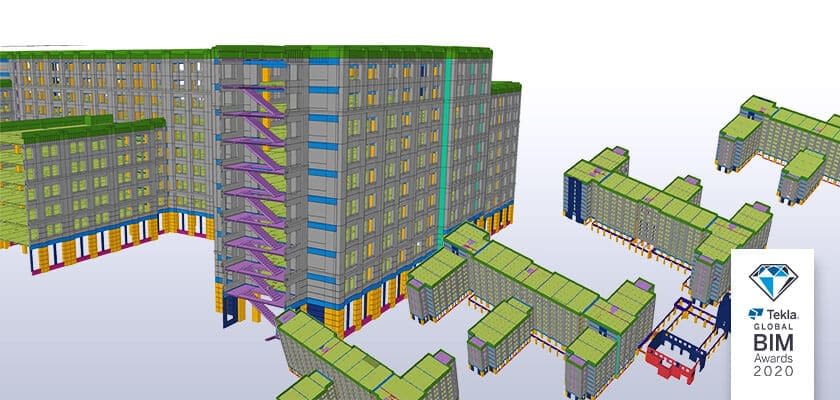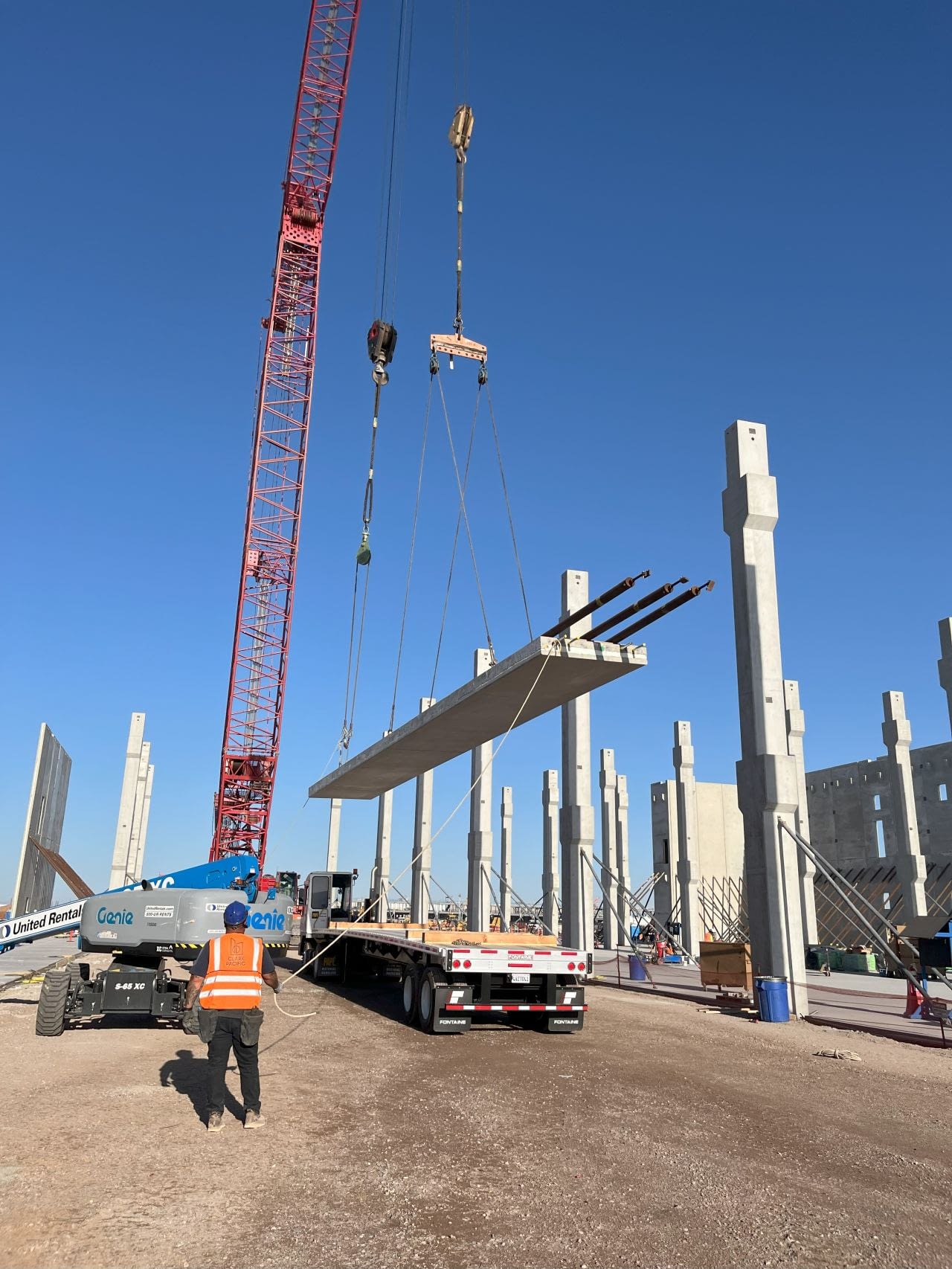A tight project timeline proves the value of BIM as Clark Pacific implements an innovative prefabricated construction technique.
In September 2020, Stanford University in Palo Alto, California opened its newest and largest on-campus housing development to date. This new development, Escondido Village, features housing for over 2,400 graduate students. In total, the complex consists of four residence halls that range from six to ten stories high and increases on-campus graduate housing from 55% of students to at least 75%.
Overcoming Unique Project Challenges
Making this project especially challenging were factors such as managing a construction site located in the midst of an active college campus, engineering for the project’s location in a seismically active region, and being respectful to the distinctive architectural heritage of Stanford University.
To successfully complete this project with all of its inherent challenges, an offsite construction method was identified as the optimal solution. With decades of experience in designing, manufacturing and building prefabricated concrete structures, West Sacramento, California-based firm Clark Pacific was tapped as the design-build contractor for the structural frame of this important project.
Clark Pacific was selected as a winner in the Tekla North America BIM Awards for the precast category. Called out for being “remarkable in BIM-use,” the Clark Pacific design included precast concrete panels with pre-installed glazing making it possible for the structural frame to be built up faster and for the building envelope to be closed sooner. This resulted in valuable time-savings and risk mitigation for all project parties.
Workflow Coordination is Key
Asked how BIM improved the project flow, Grant Guerrieri, Senior Project Manager for Clark Pacific explains, “One of the largest challenges for pre-manufacturing is the logistical considerations. It starts with managing sub-components, the sub-assemblies and then individual cast units. We sometimes take for granted how complex material logistics can become, but Tekla [software and other Trimble solutions] help simplify these workflows so we can focus on the more value-add items for the client.”
Guerreri continues by noting that model sharing allowed Clark Pacific to expand their workforce globally. “Clark Pacific has strong partnerships with detailing, structural design and project management firms in the USA, Canada and India. Utilizing Tekla Model Sharing allows Clark Pacific to manage our workforce more effectively during the ups and downs of the construction industry.”
This coordination meant aligning efforts across a number of teams, including Structural Engineer of Record John A. Martin and Associates, Architect Korth Sunseri Hagey, General Contractor Vance Brown and Detailer Support Pinnacle Infotek. This necessary harmonization of teams was achieved by using Tekla’s BIM technology.
To minimize miscommunication across contractors, changes flowed between the multiple software tools to meet BIM requirements from the main structural engineer. In addition, BIM data was leveraged for downstream processes as it drove a more accurate and timelier resource planning process.
Read the full article here.



